Goldman Sachs estimates that almost one million foreign H-1B contract workers are now employed in college-level jobs throughout the United States, even though many media outlets routinely say the federal government approves only 85,000 H-1B visas per year.
Goldman’s February estimate of the huge H-1B population also ignores multiple other visa programs which invite foreign graduates to work in the United States. These other temporary work visas are used to employ an additional 470,000 foreign college graduates in the United States, according to a study released on March 7 by the left-of-center Economic Policy Institute.
The EPI study, titled “Temporary foreign workers by the numbers,” says U.S. companies employ roughly 470,000 foreign professionals via the little-known O, L, J, OPT, and TN visas.
The EPI study estimates that the H-1B population at a much lower level of only 460,000 employees, partly because EPI says many H-1B workers quickly get permanent green cards, which converts them into legal residents, not contract workers.
If Goldman’s estimate of almost one million H-1Bs is combined with the EPI’s estimate of various other skilled white-collar visa programs, then the government data shows that U.S. companies employ roughly 1.4 million lower-wage college-graduate temporary workers in the United States. The imported workers are not immigrants, citizens, legal residents or green card holders, but are supposed to return home after several years.
Companies have used them to fill enough outsourced jobs to fully employ nearly all Americans who graduated from college with skilled degrees in 2015 and 2016. This population of white-collar temporary workers has pushed many established U.S. workers out of jobs, partly because none of the visa programs require that Americans be hired before foreigners.
“I’m working at one of the Home Depot [hardware store] … there’s a lot of people in my position,” said Les, a former New York City technology worker for Disney, Pearson publishing, and other U.S. companies. He was pushed out of the business when companies outsourced their U.S. workplaces to Indian companies, many of which need U.S-based H-1B workers to link their U.S. clients to outsourcing offices in India. Les has a 13-year-old teenager to raise, and would return to the sector if he got a job offer, he said. “That’s what I know– it is not like I could go back to school to become a dentist or lawyer or a teacher,” he told Breitbart News.
The two new reports also that U.S. companies also employ roughly 185,000 foreign blue-collar temporary workers, plus roughly 200,000 foreign white-collar temporary workers. The EPI report also says the population of agricultural contract-workers is roughly 75,000, or just seven percent of at least 930,000 university trained guest-workers resident in the United States.
Campaign Promises
The huge U.S.-based population of professional-grade foreign contract workers—ranging from 1.4 million up to 1.8 million—is a problem for President Donald Trump, who repeatedly promised to reform the H-1B program during his 2016 campaign.
“I will end forever the use of the H-1B as a cheap labor program, and institute an absolute requirement to hire American workers first for every visa and immigration program,” said a Trump statement in 2016. “No exceptions.” In his inauguration speech, Trump declared his national economic policy is: “Buy American, Hire American.”
So far, Trump has not revamped the H-1B program, although his deputies have temporarily ended a fast-track H-1B approval process supported by business groups. That change was adopted amid intense lobbying by brand-name companies—including Google, Microsoft, Facebook—to preserve the annual inflow of cheap white-collar workers.
On April 3, the Department of Labor will start distributing another 85,000 H-1B visas to companies, as required by law.
Statements from White House officials suggest that a reform of the H-1B program will be linked to a larger plan to comprehensively reform the nation’s family-chain immigration system into Trump’s proposed merit-based immigration system.
Business groups will likely oppose Trump’s merit-based immigration reform unless they can negotiate a promise for additional H-1B contract workers. In 2013, Democratic politicians supported this negotiated demand by business groups, because the business groups promised to pressure GOP politicians to create “a path to citizenship” for the resident population of at least 11 million illegal aliens.
Trump would be reluctant to endorse any increase in white-collar contract workers because polls show that voters—especially his voters—want Americans to get jobs before companies can import more contract workers.
For more than 20 years, blue-collar pay-packets have been slashed by the large population of 8 million working illegal immigrants, and by the legal immigration of roughly 800,000 non-college immigrants each year.
University-trained Americans now face a growing economic threat from the inflow of university-grade contract workers.
No matter their skills, American white-collar workers face a huge disadvantage because the guest-workers have a much greater incentive to work long hours at low wages.
The distorting incentive is the federal government’s willingness to offer a deferred bonus of citizenship to foreign workers who stay in their temp jobs for six to 10 years. This government-provided, deferred compensation package is worth many millions of dollars to contract workers, partly because the citizenship benefit can be duplicated for their spouses, children, parents, siblings, and descendants.
Those benefits of citizenship are vast — they include all of the rights enunciated in the U.S. Constitution, plus the right to live in a high-trust society largely free of petty corruption, clannishness or tribalism, of class, caste, racial or regional discrimination, plus full access to the efficient economy, the free education system, the massive federal welfare system and the national banking system, plus the physical security ensured by gun rights, law-abiding neighbors, efficient police and military services.
But companies cannot offer American job-seekers this subsidy instead of wages because the Americans already are citizens.
If they want to hire an American instead of a foreign contract worker, companies have to pay Americans their full, unsubsidized marketplace value. So the hidden federal subsidy of citizenship-for-foreigners skews hiring practices in favor of foreign workers, much to the disadvantage of the 800,000 young Americans who graduate with skilled degrees each year.
Federal data shows that relatively few American graduates even get jobs in the high-skilled sectors which they studied — at great cost — in university. The U.S. Census Bureau reported in July that 2014 that:
74 percent of those who have a bachelor’s degree in science, technology, engineering and math — commonly referred to as STEM — are not employed in STEM occupations … According to new statistics from the 2012 American Community Survey, engineering and computer, math and statistics majors had the largest share of graduates going into a STEM field with about half employed in a STEM occupation. Science majors had fewer of their graduates employed in STEM.
Roughly 660,000 foreign H-1B workers are employed throughout the U.S. software business, says the Goldman report. Many are employed in writing software, but many foreigners are hired as cheap managers, business experts, financial analysts, and salesmen by American and foreign-owned companies. An additional 340,000 H-1B contract workers are employed throughout the nation as doctors, therapists and pharmacists, professors, engineers and financial planners, managers and designers, soccer coaches and economics teachers, government scientists and university lab technicians, architects, lawyers and even journalists, according to job descriptions found at MyVisaJobs.com.
Amid this widespread use of white-collar contract workers, the salaries of young American professionals have stalled since the real-estate bubble imploded. In the last five years, they’ve grown by roughly one percent a year—after deducting inflation—according to a January 2017 report titled “National Compensation Forecast,” by the Economic Research Institute.
During the same five-year period, slow-growing salaries, increased company profits, and sales have pushed the Dow Jones Index of stocks up by 60 percent.
If the contract-worker programs were sharply reduced, Americans companies would be forced to compete for the limited pool of Americans by offering higher salaries. The resulting “tight labor market” for Americans graduates would push up average salaries, give underemployed graduates an escape from low-wage jobs (such as at Starbucks), boost recruitment of older professionals, spur productivity-boosting technology investment, and also greatly increase the opportunities for American teenagers, dropouts and the unemployed to study for college degrees.
Even minor reforms of the H-1B program—such as minimum-salary rules—would boost salaries by 10 percent for the many U.S.-based employees of Indian-owned outsourcing companies, says the Goldman Sachs report.
The H-1B Population
The lack of public data about the number of resident H-1Bs is “absurd,” said Mark Krikorian, director of the Center for Immigration Studies.
“This is a basic piece of information that the public should know, and the problem is not even that the government has the numbers and isn’t releasing them—rather the government doesn’t know the number itself,” he said.
The establishment media tend to ignore the issue of H-1B numbers or just to highlight the annual inflow of guest-workers instead of describing the full resident population.
Calculating the total numbers is difficult. The guest-worker program is managed collectively by the departments of Labor, State, and Homeland Security. Each agency collects data on different aspects of the program, including the number of requests for work visas, the number of visas that are approved, and the arrival or departure of contract workers.
Also, the regulatory details of the H-1B program are complex. The basic regulations say each H-1B visa lasts for three years—and can be automatically extended for another three years. In theory, that would limit the H-1B population to a maximum of six times the annual apparent cap of 85,000, or a total of 510,000.
But, the program has many loopholes which are used by immigration lawyers to bring in an extra 20,000 extra H-1B workers per year, to lengthen the stay of many H-1Bs by several years and to get work permits for some spouses of H-1B workers.
Goldman Sachs’ February study, titled “The H-1B Visa Debate: A Global FAQ for Investors,” tried to count these extra workers and extra years, saying:
“We estimate that 900k to 1mn individuals are working under H-1B visas in the US today, based on the assumption that most existing visas are renewed for a second term, and that about two-thirds of qualified H-1B visa holders eventually apply for a green card (based on average wait times and green card quotas for countries affected) … figures would be slightly higher when including spouses of H-1B visa holders (which could be as many as 500k people based on prevailing marriage rates of roughly 50% across countries).
That number is much larger that a 2011 estimate by the non-partisan Center for Immigration Studies, which estimated the population of H-1Bs to be roughly 650,000.
Additional White-Collar Visa Programs
Both the EPI and the Goldman studies ignore different parts of the massive white-collar contract labor force in the United States.
The Goldman report understates the total number of foreign-born, white-collar contract workers in the United States by downplaying several additional visa programs that are similar to the H-1B program.
In contrast, the EPI report shows that these additional visa programs keep an extra population of roughly 450,000 skilled white-collar workers in the United States. For example, the EPI study says the J visa delivers roughly 56,000 professionals, the Optional Practical Training program employs almost 140,000 graduates, the free-trade visas supply another 50,000 professionals, and the L visas allow 350,000 blue-collar or white-collar foreign company employees to work in the United States.
The Goldman report also shows—but does not count—the annual inflow of white-collar workers via the L, B and O visa programs. The 2015 inflow of these contract workers is 180,000, said the report. A back-of-the-envelope calculation suggests these visa programs are used by a resident population of 200,000 white-collar, guest-workers residing in the United States.
But the Goldman report also does not mention the J visas or the Optional Practical Training visas, which together deliver almost 200,000 foreign college graduates to work in the United States, according to EPI.
The EPI study ignores the fact that President Barack Obama allowed the spouses of H-1B workers to get jobs. The Goldman report says that roughly 500,000 spouses of H-1B workers are now allowed to get jobs in the United States. The Goldman report does not say how many of the H-1B spouses are working in skilled white-collar jobs, but if that number is only one-fifth of the resident H-1B spouses, then the number of foreign white-collar contract workers would climb by up to 100,000 people.
If Goldman’s estimate of almost one million H-1Bs, is combined with the EPI’s estimate of other skilled white-collar visa programs, the data shows that U.S. companies employ roughly 1.4 million white-collar, foreign contract workers in the United States.
That’s enough jobs to fully employ nearly all Americans who graduated from college with skilled degrees in 2015 and 2016.
Even if the EPIs lower estimate for the H-1B population is correct, then the extra visas programs show the number of university-trained contract workers in the United States up to roughly 940,000.
Goldman’s estimate of almost one million H-1Bs is much higher than the EPI estimate because Goldman estimates many H-1Bs are waiting for green cards instead of returning home.
Green Cards
Roughly two-thirds of H-1B workers apply for green cards, says Goldman. The pipeline for green cards is very backed up because only a maximum of 140,000 green cards are awarded to foreign employees and their family members each year. This backed-up pipeline ensures that many H-1Bs stay in the United States longer than six years by getting one-year or three-year H-1B renewals as they wait to get green cards.
In contrast, the EPI report reduces its estimate of the resident H-1B population by concluding that 140,000 H-1B visa workers quickly got permanent green cards in 2011, 2012 and 2013, so reducing the number of contract workers in the H-1B program.
Both reports acknowledge that many contract workers get green cards and remain in the United States. But neither report counts the number of former contract workers who have won green cards, and who are free to compete against American graduates for jobs.
That number is difficult to count because the federal government distributes 140,000 green cards to company employees each year, but those cards must be shared with family members, including spouses and children.
The green card numbers add up. For example, if 40,000 skilled workers get Green Cards each year for the next decade, that delivers another 400,000 foreign-born skilled workers into the U.S. labor market to compete against Americans. If two-thirds of those 400,000 future green card workers are information-technology H-1Bs, they will be enough to grab 54 percent of the extra 488,500 new technology jobs that the Bureau of Labor Statistics expects will be added to the economy over the next decade.
In 2016, Breitbart surveyed the data for three Midwestern states, and concluded up to 75,000 foreign college grads have gotten green cards since 1990.
Like many other name-brand companies and universities, Goldman hires thousands of H-1B workers for jobs sought by young American business graduates and tries to get green cards for hundreds of its employees. The company numbers are shown by this chart found at MyVisasJobs.com, which relies on government data to track the H-1B marketplace.
The annual inflow of skilled workers with green cards would be far higher if the 2013 “Gang of Eight immigration bill had passed. That bill allowed universities to get green cards for an unlimited number of foreign customers who paid for a Masters Degree at a U.S. university. Thea plan died in 2014 when GOP House Speaker John Boehner recognized the high level of public opposition to the amnesty and cheap-labor bill.
Universities and Non-Profits
The Goldman report does not mention the semi-secret supply of H-1B visas granted to non-profit universities and non-profit affiliates of major companies.
Non-profits can hire as many H-1B workers as they wish each year, and now employ roughly 85,000 H-1B workers as professors, doctors, researchers, and designers. That 85,000 estimate is only for contract workers holding the renewable three-year H1-B visas, and it excludes H-1B workers who are in the process of getting green cards. The Goldman report says two-thirds of H-1B holders try for green cards, so pushing up the universities’ likely employment of H-1Bs up to roughly 130,000 foreign contract workers. That overall university population is likely included in Goldman’s estimate of almost one million resident H-1Bs.
Other Contract Workers
The EPI estimate says the resident population of blue-collar contract workers is roughly 95,000 H-2B workers plus roughly 90,000 unskilled J-1 “Summer Work Travel” workers, many of whom work blue-collar jobs at vacation resorts.
The EPI data also suggests that 200,000 unskilled white-collar contract workers live in the United States.
Follow Neil Munro on Twitter @NeilMunroDC or email the author at NMunro@Breitbart.com
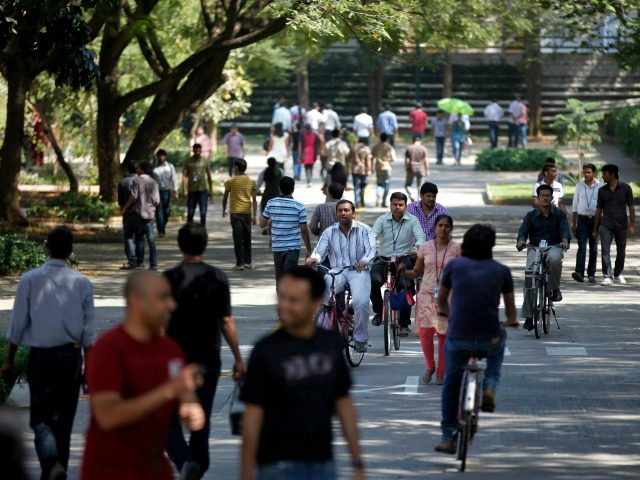
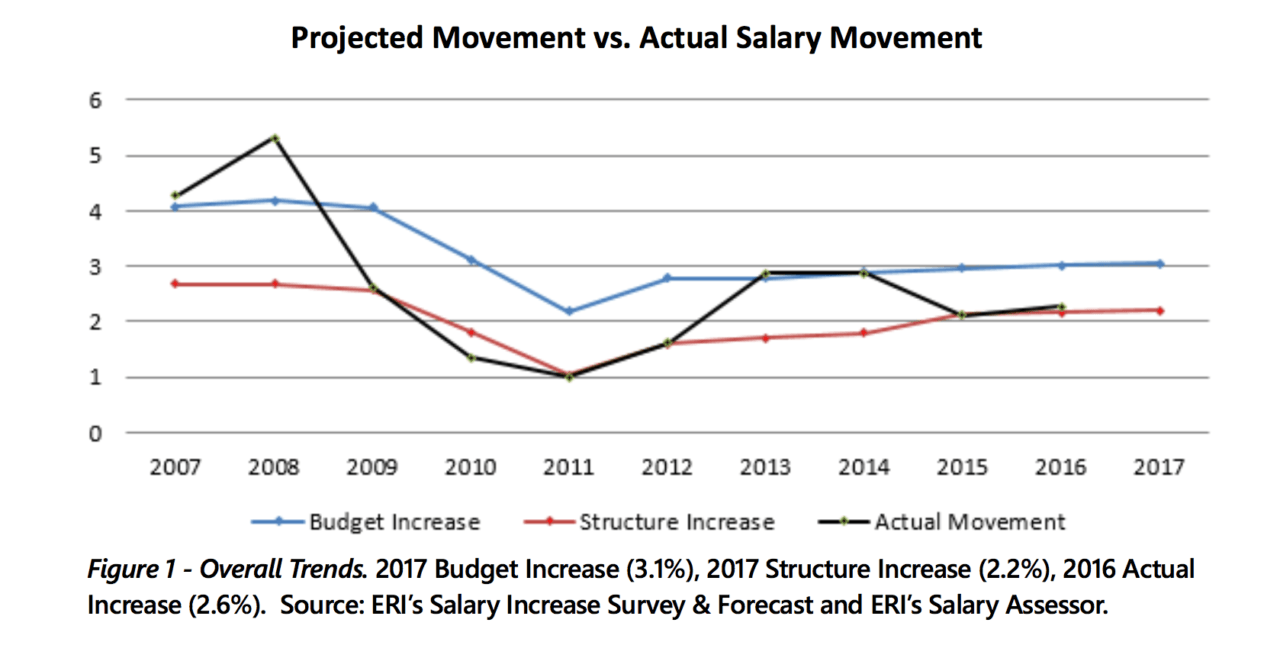
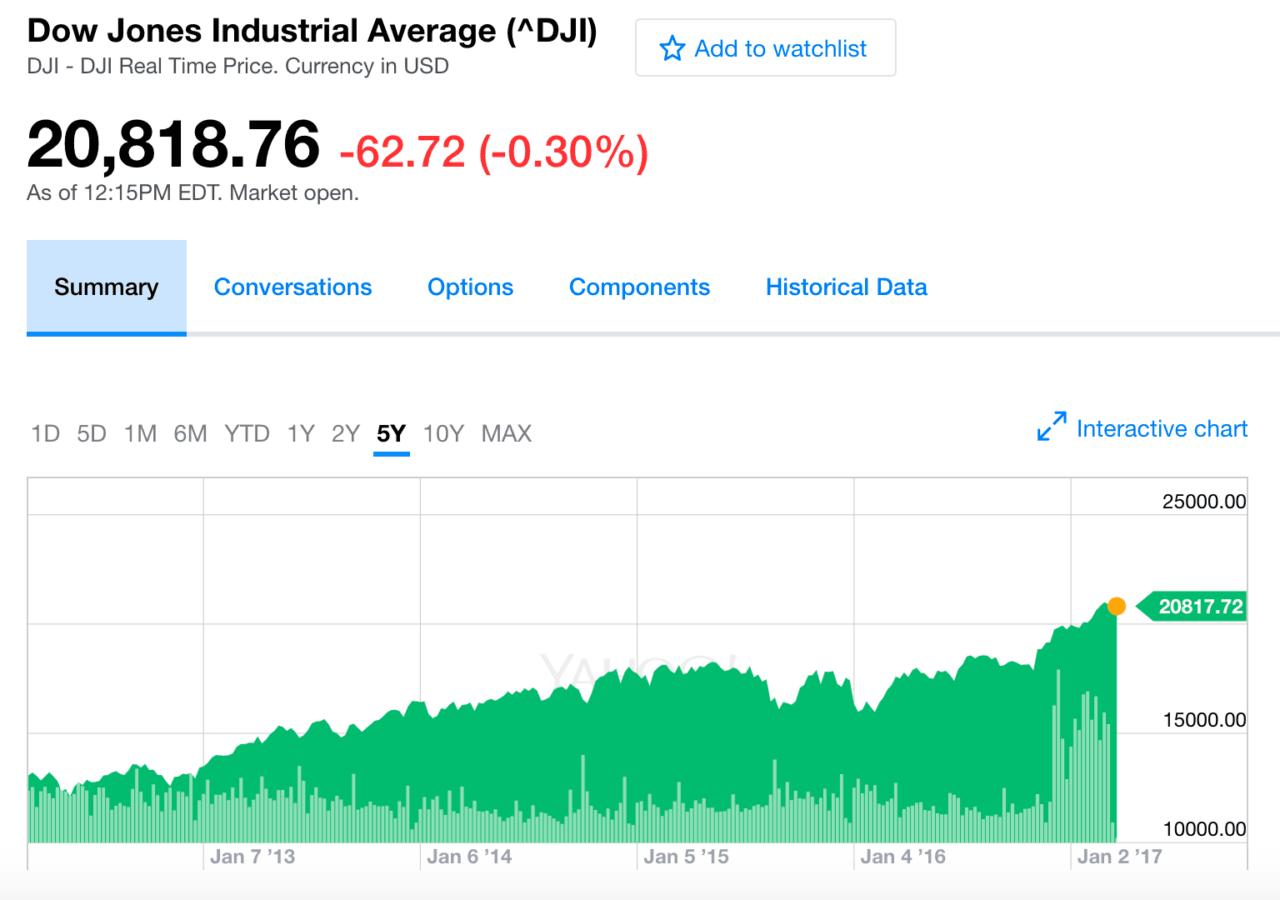
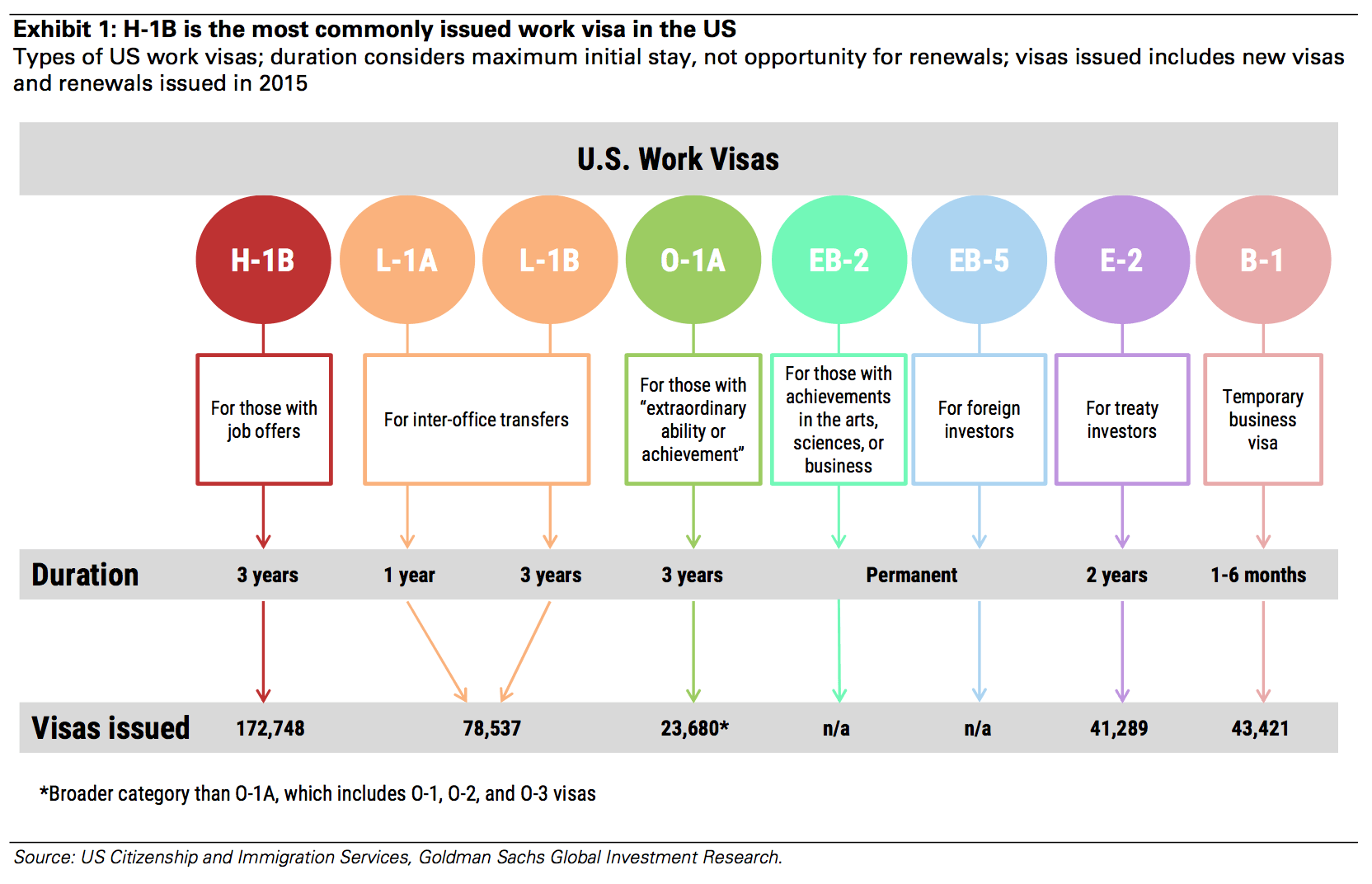

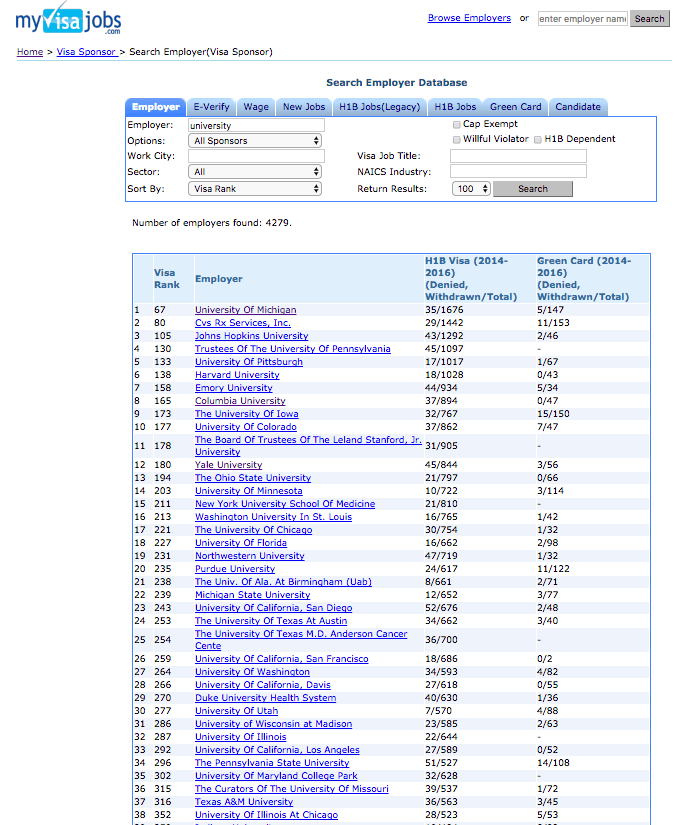
COMMENTS
Please let us know if you're having issues with commenting.